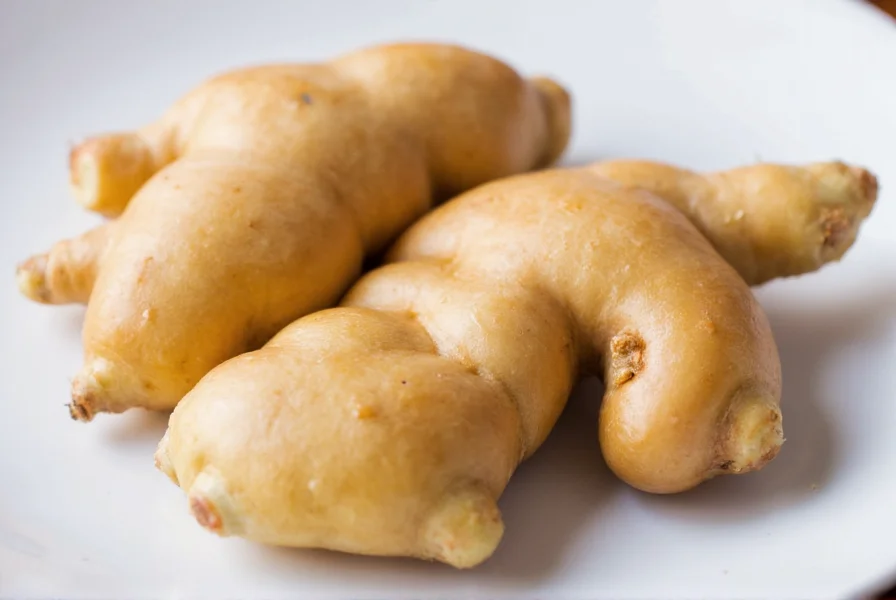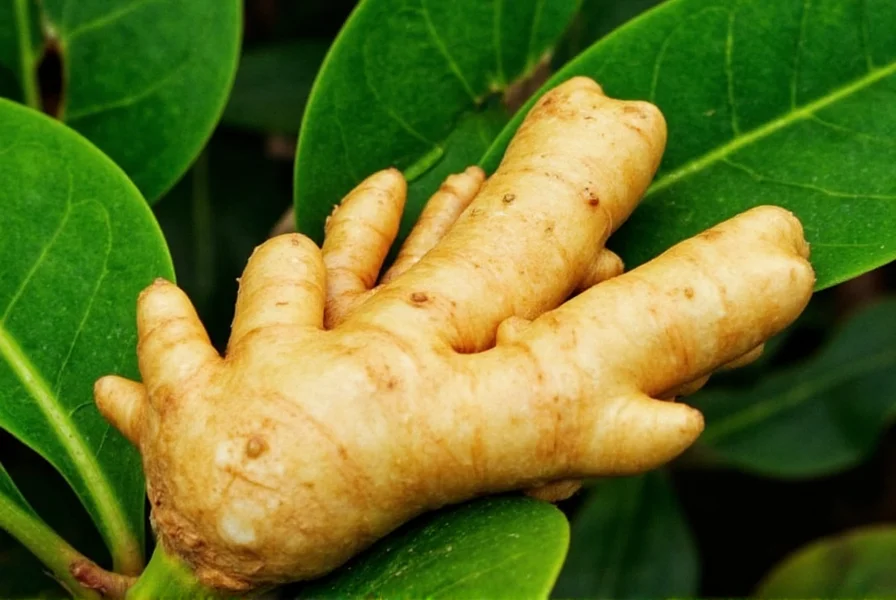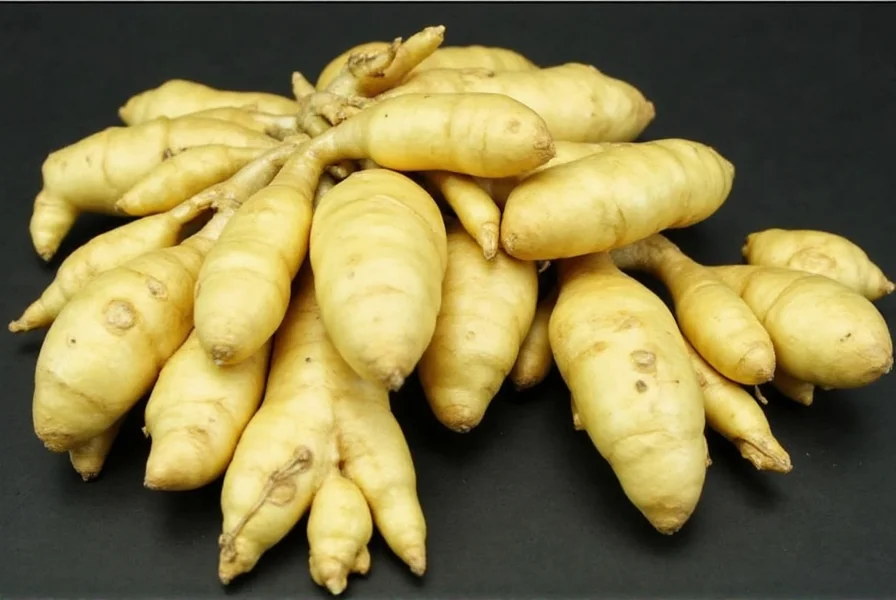Understanding Siam Ginger: Botanical Profile and Origins
Siam ginger (Kaempferia parviflora), often referred to as black ginger or Thai ginseng, belongs to the Zingiberaceae family but represents a distinct species from the common ginger found in grocery stores. This remarkable plant features heart-shaped leaves and striking purple flowers, with its most valuable component being the dark purple to black rhizome that grows underground.
Native to the tropical forests of Thailand, Laos, and Cambodia, Siam ginger has deep roots in traditional Southeast Asian medicine. Historical records indicate Thai healers have utilized this botanical for over 500 years, particularly in the region formerly known as Siam, which explains its common name. The plant thrives in shaded, humid environments with well-draining soil, typically growing to about 15-30 centimeters in height.
| Characteristic | Siam Ginger (Kaempferia parviflora) | Common Ginger (Zingiber officinale) |
|---|---|---|
| Rhizome Color | Dark purple to black | Pale yellow to light brown |
| Primary Region | Thailand, Laos, Cambodia | South Asia, now global cultivation |
| Traditional Uses | Energy enhancement, circulation | Digestive aid, nausea relief |
| Key Compounds | Polyphenols, flavonoids | Gingerols, shogaols |
Traditional Applications in Southeast Asian Culture
For generations, Thai traditional medicine practitioners have incorporated Siam ginger into various wellness practices. Local communities in northeastern Thailand, particularly in the Isan region, have used the rhizome in powdered form to support vitality and endurance. Traditional preparation methods typically involve drying and grinding the rhizomes, then mixing with honey or warm water.
Unlike common ginger which primarily addresses digestive concerns, Siam ginger traditionally served different purposes in Thai herbalism. Elders in rural communities often consumed it as a natural energizer before physical labor or to support circulation during cooler months. The plant's significance in local culture extends beyond wellness; some communities incorporated it into ceremonial practices and folk remedies passed down through generations.

Scientific Research and Modern Understanding
Contemporary research has begun investigating the traditional claims surrounding Siam ginger. Multiple studies have identified unique polyphenolic compounds in Kaempferia parviflora, particularly methoxyflavones, which appear in significantly higher concentrations than in common ginger varieties. These compounds show antioxidant properties in laboratory settings.
A 2020 review published in the Journal of Ethnopharmacology examined existing research on black ginger, noting several promising areas for further investigation including metabolic health and exercise performance. However, researchers emphasized that most studies remain preliminary, conducted in vitro or with animal models, and that human clinical trials are limited in scope and duration.
It's crucial to distinguish between traditional use and scientifically validated effects. While Siam ginger shows interesting potential, current evidence doesn't support specific medical claims. The FDA hasn't approved it for treating any medical condition, and consumers should view it as a botanical supplement rather than a therapeutic agent.
Distinguishing Siam Ginger from Common Ginger Varieties
Many people confuse Siam ginger with the common ginger (Zingiber officinale) found in supermarkets. The differences extend beyond appearance:
- Botanical classification: Siam ginger belongs to the Kaempferia genus, while common ginger is Zingiber
- Chemical composition: Siam ginger contains unique methoxyflavones not found in significant quantities in common ginger
- Taste profile: Siam ginger offers earthier, more complex notes with less pungency than common ginger
- Traditional applications: Thai medicine uses Siam ginger differently than how common ginger functions in Ayurveda or Chinese medicine
Practical Applications and Availability
Today, Siam ginger appears in various forms beyond traditional preparations. Health food stores may carry it as:
- Dried rhizome powder for teas and supplements
- Capsule supplements standardized for specific compounds
- Extracts in tincture form
- Fresh rhizomes in specialty Asian markets (less common)
Gardeners interested in cultivation should note that Siam ginger requires specific growing conditions. It prefers partial shade, consistent moisture without waterlogging, and temperatures between 20-30°C (68-86°F). The plant typically becomes dormant during dry seasons, with rhizomes surviving underground until conditions improve.

Responsible Considerations for Consumers
As with any botanical supplement, consumers should approach Siam ginger with informed awareness. While generally considered safe when consumed in food amounts, concentrated forms may interact with certain medications. Individuals taking blood thinners or managing blood sugar should consult healthcare providers before using Siam ginger supplements.
The supplement market lacks the rigorous testing required for pharmaceuticals, so product quality varies significantly. Look for third-party tested products with clear labeling of Kaempferia parviflora content. Avoid products making dramatic health claims, as legitimate botanical supplements won't promise cures or rapid results.
What is the scientific name for Siam ginger?
The scientific name for Siam ginger is Kaempferia parviflora. It's important to verify this botanical name when purchasing products, as some vendors may incorrectly label other ginger varieties as Siam ginger.
How does Siam ginger differ from regular ginger?
Siam ginger (Kaempferia parviflora) has dark purple to black rhizomes compared to the pale yellow of common ginger (Zingiber officinale). They belong to different botanical genera, contain different active compounds, and have been used for distinct purposes in traditional medicine systems.
Are there any proven health benefits of Siam ginger?
Current research shows Siam ginger contains unique compounds with antioxidant properties in laboratory studies. However, human clinical evidence remains limited. While traditional use suggests various benefits, scientific validation for specific health claims is still evolving, and it should not replace medical treatment.
Where can I find authentic Siam ginger products?
Authentic Siam ginger products are available through specialty Asian markets, reputable herbal supplement retailers, and some online vendors. Look for products that clearly identify Kaempferia parviflora as the ingredient and preferably have third-party testing verification. Be cautious of products making exaggerated health claims.
Can I grow Siam ginger in my garden?
Siam ginger can be grown in tropical and subtropical climates with partial shade and well-draining soil. It requires consistent moisture but cannot tolerate waterlogged conditions. In temperate regions, it can be grown in containers and brought indoors during colder months. The plant typically becomes dormant during dry seasons.











 浙公网安备
33010002000092号
浙公网安备
33010002000092号 浙B2-20120091-4
浙B2-20120091-4